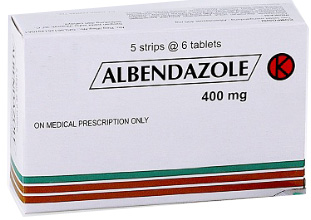Drug Classification
Albendazole is classified as an anthelmintic medication, primarily used to treat infections caused by worms and parasites. It belongs to the benzimidazole class of drugs. These work by inhibiting the polymerization of tubulin into microtubules, disrupting the essential structures of the cells of the parasites. This mechanism leads to the impaired glucose uptake in parasites, eventually causing their death through energy depletion.
Therapeutic Indications
Albendazole is indicated for the treatment of a variety of parasitic infections, including neurocysticercosis caused by Taenia solium, and hydatid disease caused by Echinococcus granulosus. It is also effective against ascariasis, trichuriasis, hookworm infections, and strongyloidiasis. Albendazole plays a crucial role in controlling lymphatic filariasis and is sometimes used off-label for other parasitic conditions upon healthcare provider’s discretion.
Dosage and Administration
Dosage of Albendazole varies based on the specific infection being treated. For neurocysticercosis, the usual adult dose is 400 mg twice daily for 8 to 30 days, depending on the severity. In cases of hydatid disease, treatment may extend from 1 to 6 months, with 400 mg administered twice daily. Albendazole should be taken with meals to enhance absorption. Pediatric dosing is adjusted by weight and age, and physician guidance is essential. Proper adherence to prescribed dosages ensures optimal efficacy.
Pharmacokinetics Profile
Albendazole is absorbed slowly after oral administration, with bioavailability improving significantly when taken with fatty meals. It undergoes extensive first-pass metabolism in the liver, converting into its active metabolite, albendazole sulfoxide. Peak plasma concentrations of albendazole sulfoxide are typically reached in 2 to 5 hours post-dose. The medication has a half-life of 8.5 hours, allowing for once or twice-daily dosing strategies. Its metabolites are primarily excreted via urine.
Contraindications Overview
Albendazole is contraindicated in patients with known hypersensitivity to the drug or any of its components. Usage during the first trimester of pregnancy is discouraged due to potential teratogenic effects. It should be avoided in individuals with pre-existing liver conditions, unless benefits outweigh risks, and only under medical supervision. A negative pregnancy test is usually recommended before initiating therapy in women of childbearing age.
Drug Interactions Concerns
Albendazole can interact with other medications, potentially altering their effects. For example, cimetidine and dexamethasone may increase the plasma concentration of albendazole sulfoxide, while antiepileptic drugs like phenytoin and carbamazepine may reduce its effectiveness. Healthcare providers should be informed of all concurrent medications to avoid possible interactions and adjust dosages as necessary. Monitoring sometimes becomes essential based on potential interactions.
Adverse Reactions Detail
Common adverse effects of Albendazole include gastrointestinal discomfort such as nausea and abdominal pain, headache, and dizziness. Elevated liver enzymes are also observed in some cases and warrant regular monitoring. Less frequent but serious side effects include bone marrow suppression, which can lead to pancytopenia and necessitates periodic blood counts. Neurological symptoms might worsen initially in some parasitic infections, requiring corticosteroid co-administration.
Special Populations Guidance
Albendazole may have different safety and efficacy profiles in special populations, including pediatric patients, the elderly, and those with renal or hepatic impairment. In children, dosing is generally weight-dependent, and careful monitoring is required due to their developing physiology. The elderly may need dose adjustments depending on liver function, and those with impaired renal function should be observed closely during treatment. A tailored approach maximizes therapeutic outcomes for these groups.
Monitoring Recommendations
Regular monitoring is crucial during Albendazole treatment to ensure safety and efficacy. Liver function tests are recommended at baseline and periodically thereafter, particularly in those undergoing long-term therapy. Blood counts should be assessed to detect potential bone marrow suppression early. An ophthalmologic exam may also be indicated in patients with neurocysticercosis to check for retinal involvement. Effective monitoring helps mitigate risks and adjust therapy as needed.
Patient Education Points
Patients taking Albendazole should be advised to adhere strictly to prescribed dosing schedules and complete the full course of therapy, even if symptoms improve. They should be instructed to take the medication with food to enhance absorption and reduce gastrointestinal side effects. Patients should report any unusual symptoms, such as persistent nausea or signs of infection, to their healthcare provider immediately. Clear understanding and adherence contribute greatly to successful treatment outcomes.





Reviews
There are no reviews yet.